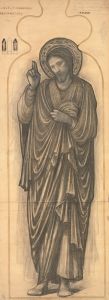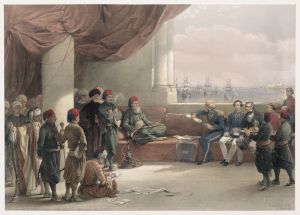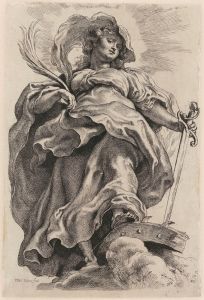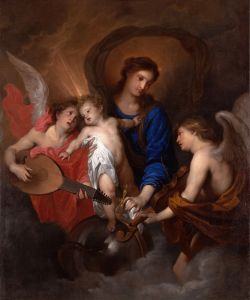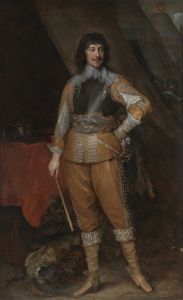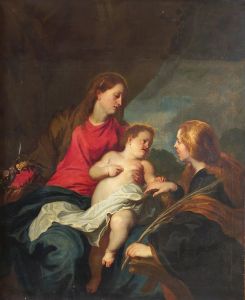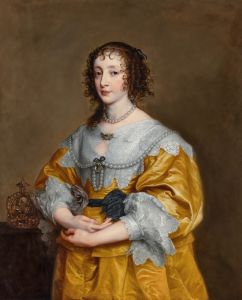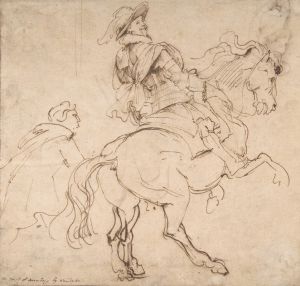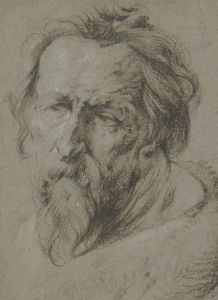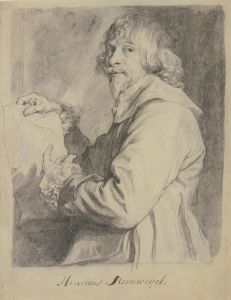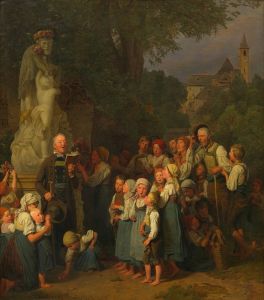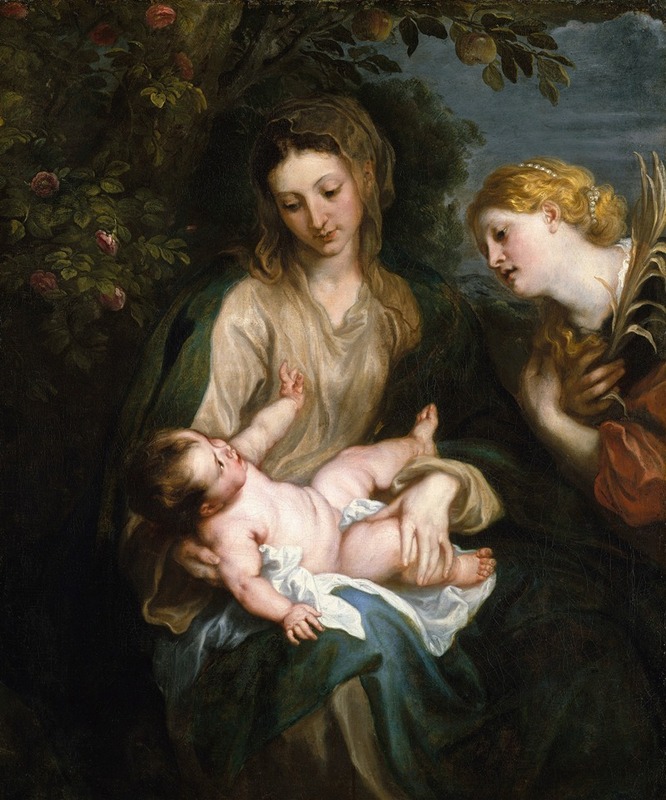
Virgin and Child with Saint Catherine of Alexandria
A hand-painted replica of Anthony van Dyck’s masterpiece Virgin and Child with Saint Catherine of Alexandria, meticulously crafted by professional artists to capture the true essence of the original. Each piece is created with museum-quality canvas and rare mineral pigments, carefully painted by experienced artists with delicate brushstrokes and rich, layered colors to perfectly recreate the texture of the original artwork. Unlike machine-printed reproductions, this hand-painted version brings the painting to life, infused with the artist’s emotions and skill in every stroke. Whether for personal collection or home decoration, it instantly elevates the artistic atmosphere of any space.
Virgin and Child with Saint Catherine of Alexandria is a painting by the Flemish Baroque artist Anthony van Dyck, created around 1630. Van Dyck, a prominent figure in 17th-century European art, was known for his refined portraiture and religious compositions. This particular work exemplifies his skill in combining religious themes with the elegance and emotional depth characteristic of his style.
The painting depicts the Virgin Mary holding the Christ Child, accompanied by Saint Catherine of Alexandria, a popular saint in Christian iconography. Saint Catherine is traditionally identified by her attributes, which often include a wheel (a reference to her martyrdom) and a sword. In this composition, she is shown in a moment of devotion, gazing reverently at the Virgin and Child. The figures are arranged in a harmonious triangular composition, a common technique in Renaissance and Baroque art to create balance and focus.
Van Dyck's use of color and light in this work is notable. The soft, glowing light enhances the figures' expressions and creates a sense of intimacy and warmth. The rich, yet subdued palette reflects the influence of his teacher, Peter Paul Rubens, while also showcasing Van Dyck's own distinctive approach to texture and detail. The drapery of the Virgin's garments and the delicate rendering of Saint Catherine's features demonstrate the artist's technical mastery.
The painting is believed to have been created during Van Dyck's time in Antwerp, after his return from Italy and before his move to England. This period was marked by a synthesis of influences from Italian Renaissance and Baroque art, which Van Dyck absorbed during his travels, and the Flemish artistic traditions of his homeland. The work reflects both the grandeur of Italian religious painting and the intimate, humanized approach to sacred subjects that Van Dyck developed.
Today, Virgin and Child with Saint Catherine of Alexandria is housed in the Museo del Prado in Madrid, Spain. It is part of the museum's extensive collection of European art and is considered an important example of Van Dyck's religious works. The painting continues to be admired for its beauty, emotional resonance, and the artist's ability to convey spiritual themes with grace and sensitivity.





